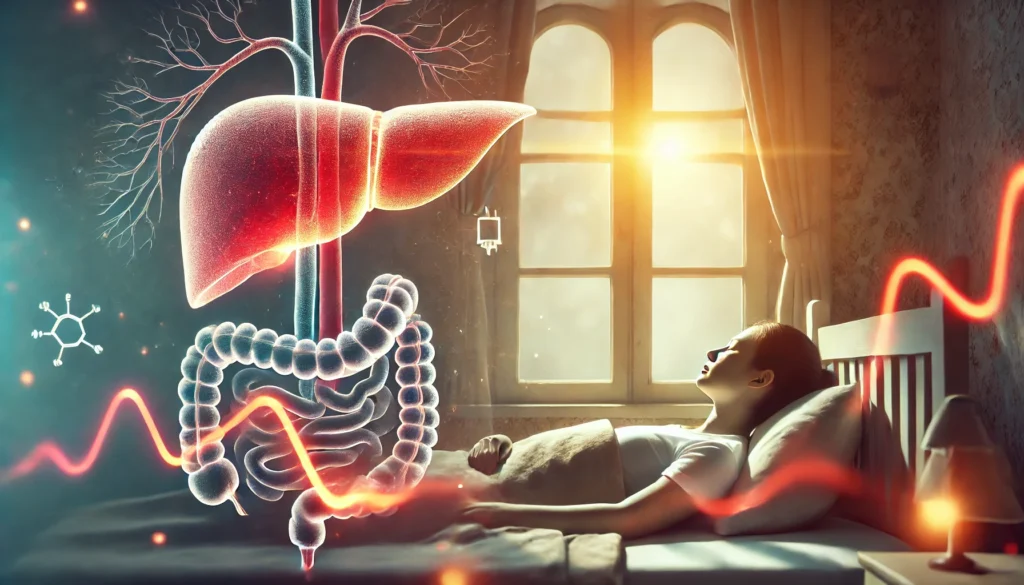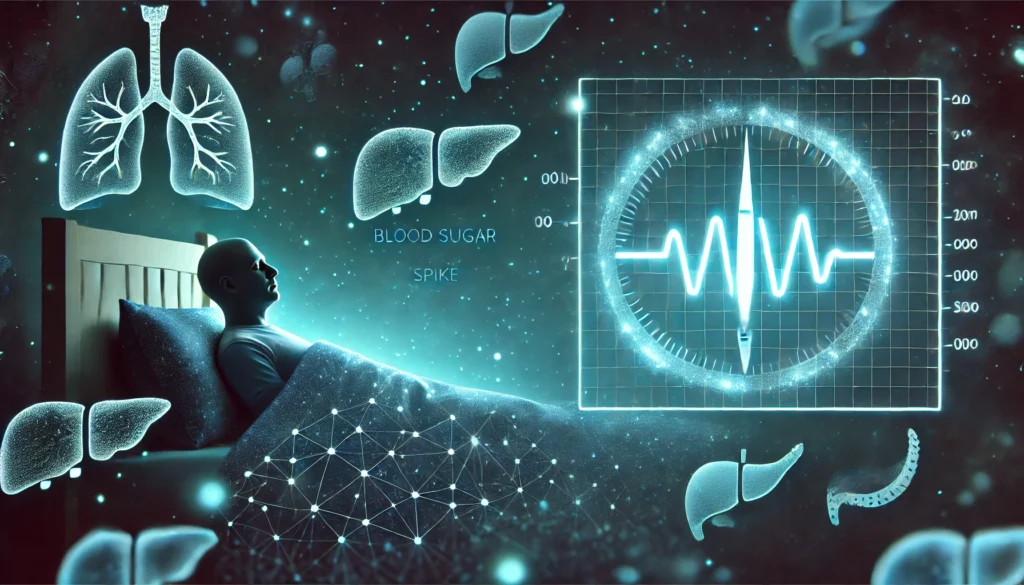Understanding Morning Blood Sugar Spikes: A Scientific Overview
Many individuals with diabetes or insulin resistance frequently notice elevated blood sugar levels upon waking. This phenomenon often leads to confusion and concern, especially when blood glucose levels were stable or within target ranges the night before. The primary physiological processes responsible for these morning glucose fluctuations are known as the Somogyi Effect and the Dawn Phenomenon. Understanding these mechanisms is essential for effective blood sugar management and overall metabolic health.
You may also like: How Diabetes Affects the Brain: Understanding Brain Fog, Memory Loss, and Mental Confusion from High Blood Sugar
The Role of Circadian Rhythms in Blood Sugar Regulation
Our body follows a natural circadian rhythm that influences hormone secretion, metabolism, and glucose regulation. During sleep, various hormonal shifts occur to prepare the body for the demands of the day ahead. These processes can significantly impact fasting blood sugar levels, often leading to elevated readings in the morning. The interaction between insulin, cortisol, glucagon, and growth hormone plays a crucial role in these fluctuations. While these hormonal changes are a normal part of human physiology, they can pose challenges for individuals with diabetes or prediabetes, as their bodies may struggle to compensate for these natural variations.

The Dawn Phenomenon: A Natural Hormonal Surge
The Dawn Phenomenon refers to the natural rise in blood sugar levels that occurs in the early morning hours, typically between 3 a.m. and 8 a.m. This increase is primarily driven by the release of counter-regulatory hormones such as cortisol, growth hormone, and glucagon. These hormones signal the liver to release stored glucose into the bloodstream, ensuring an adequate energy supply upon waking. In individuals without diabetes, insulin secretion adjusts accordingly to maintain glucose homeostasis. However, in those with diabetes or insulin resistance, the body’s response may be inadequate, leading to high morning blood sugar levels.
This effect is particularly pronounced in individuals with Type 2 diabetes, as insulin resistance impairs the body’s ability to regulate glucose efficiently. For those with Type 1 diabetes, insufficient insulin administration overnight may also exacerbate the Dawn Phenomenon. While this physiological process is not inherently harmful, it necessitates strategic adjustments in diabetes management to maintain stable glucose levels.
The Somogyi Effect: A Rebound Response to Nocturnal Hypoglycemia
The Somogyi Effect, also known as rebound hyperglycemia, occurs when blood sugar levels drop too low during the night, prompting the body to counteract this hypoglycemia by releasing stress hormones that raise glucose levels. This mechanism is a protective response designed to prevent prolonged or severe hypoglycemia. However, in individuals with diabetes, this compensatory process can lead to an excessive increase in morning blood sugar levels.
This effect is often triggered by excessive insulin doses, prolonged fasting, or intense physical activity before bed. Unlike the Dawn Phenomenon, which occurs due to a natural hormonal rhythm, the Somogyi Effect is a reaction to an actual hypoglycemic episode. Distinguishing between these two phenomena is essential for implementing the appropriate corrective measures.
How to Differentiate Between the Somogyi Effect and Dawn Phenomenon
Understanding whether high morning blood sugar levels are due to the Somogyi Effect or the Dawn Phenomenon requires careful monitoring. A key strategy involves checking blood sugar levels at different points during the night:
- If blood sugar levels are low (below 70 mg/dL) around 2 a.m. or 3 a.m., the cause is likely the Somogyi Effect.
- If blood sugar levels remain stable or slightly elevated during the night but rise in the early morning hours, the cause is likely the Dawn Phenomenon.
Continuous glucose monitoring (CGM) devices can provide valuable insights by tracking blood sugar patterns overnight. Alternatively, individuals can conduct periodic fingerstick tests to gather data on their nocturnal glucose trends.
Managing High Blood Sugar Levels in the Morning
Effectively managing morning hyperglycemia requires a personalized approach based on the underlying cause. Whether the culprit is the Dawn Phenomenon or the Somogyi Effect, several strategies can help stabilize glucose levels:
Adjusting Insulin Therapy
For individuals who take insulin, adjusting the dosage or timing of their evening insulin injections can help mitigate morning hyperglycemia. If the Dawn Phenomenon is the primary cause, increasing basal insulin or switching to an insulin pump with customized delivery settings may be beneficial. If the Somogyi Effect is suspected, reducing the nighttime insulin dose or incorporating a bedtime snack may help prevent nocturnal hypoglycemia.
Optimizing Carbohydrate Intake
Dietary choices play a crucial role in managing blood sugar levels. Consuming a balanced dinner with fiber-rich carbohydrates, protein, and healthy fats can promote stable glucose levels throughout the night. For those experiencing the Somogyi Effect, a small protein-rich bedtime snack can help prevent blood sugar from dropping too low during sleep.
Lifestyle Modifications and Physical Activity
Engaging in regular physical activity can enhance insulin sensitivity and improve overall glucose regulation. However, exercising too close to bedtime may contribute to nocturnal hypoglycemia, increasing the risk of the Somogyi Effect. Finding a suitable exercise routine that does not interfere with overnight blood sugar stability is key to long-term metabolic health.
Stress and Sleep Management
Stress and sleep quality significantly impact hormonal regulation and glucose metabolism. Chronic stress can elevate cortisol levels, exacerbating the Dawn Phenomenon. Prioritizing stress-reducing activities such as meditation, deep breathing exercises, or yoga can promote better glucose control. Additionally, ensuring adequate and high-quality sleep supports optimal metabolic function and hormonal balance.
The Importance of Personalized Blood Sugar Management
Every individual experiences blood sugar fluctuations differently, necessitating a tailored approach to diabetes management. Consulting with a healthcare provider or a certified diabetes educator can help identify the most effective strategies based on personal glucose patterns, lifestyle factors, and medication regimens. Tracking blood sugar levels consistently and making data-driven adjustments can lead to improved metabolic control and overall well-being.

Frequently Asked Questions (FAQ): Understanding and Managing Morning High Blood Sugar
1. Why is my blood sugar high in the morning even if I eat well the night before?
It’s a common misconception that controlling your evening meal will always prevent high blood sugar in the morning. However, the body’s hormonal shifts during sleep can trigger both the dawn phenomenon and the Somogyi effect, leading to elevated morning glucose. If you find yourself asking, “Why is my blood sugar level higher in the morning?” despite healthy habits, your liver may be releasing stored glucose in anticipation of waking. This mechanism, while natural, can result in high blood sugar levels in the morning even without dietary missteps. Understanding the difference between Somogyi effect and dawn phenomenon is key to addressing these early spikes effectively.
2. What’s the psychological toll of waking up with high glucose in the morning?
Chronic high glucose in the morning can cause more than just physical complications—it can take a real emotional toll. People often feel defeated asking, “Why is my glucose high in the morning again?” day after day. This repeated frustration can lead to anxiety or even diabetes burnout, particularly if the cause—whether the dawn effect vs Somogyi—is unclear. Understanding and naming the issue, whether it’s the Somogyi phenomenon vs dawn phenomenon, can provide psychological relief and guide a better treatment plan. Emotional well-being is often overlooked in glucose management, yet it’s crucial for long-term success.
3. Why does my blood sugar go up at night when I haven’t eaten?
If you’ve ever tracked your glucose and asked, “Why does my blood sugar go up at night even when I’m fasting?” you’re likely experiencing the dawn phenomenon or the smogee effect. These mechanisms kick in around 3–8 a.m., releasing counter-regulatory hormones that cause elevated morning glucose. It’s not about late-night snacks—your liver is doing this autonomously to prepare for the day ahead. Understanding this helps contextualize morning high sugar, which often gets misattributed to poor nighttime habits. Continuous glucose monitoring can help pinpoint when these spikes occur and whether they align with the Somogyi vs dawn phenomenon patterns.
4. How does exercise timing affect high morning blood sugar?
When is blood sugar the highest? For many, it’s during early morning hours—ironically the same window when the body is most insulin resistant. Exercising in the evening may help mitigate the dawn phenomenon by increasing overnight insulin sensitivity. If you’re struggling with high morning blood sugar non diabetic or diabetic, shifting your workouts could blunt the glucose rise. This tactic may not resolve issues related to the Somogyi phenomenon but can be helpful for those whose glucose starts rising when they wake up. A tailored exercise schedule can be as powerful as medication when it aligns with your body’s rhythms.
5. Can non-diabetics experience elevated morning glucose?
Yes—high morning blood sugar non diabetic is a medically recognized occurrence, often driven by the dawn phenomenon. Even without diabetes, some people experience glucose levels higher in the morning due to hormonal surges like cortisol and growth hormone. These changes explain why blood sugar levels can fluctuate despite a lack of metabolic disease. If you’re asking, “Why is my blood sugar high in the morning if I don’t have diabetes?” consider tracking your levels over several weeks. Identifying the pattern can help rule out the Somogyi effect, which is more common in those on insulin or glucose-lowering therapies.
6. What’s the difference between Somogyi effect and dawn phenomenon in terms of treatment?
When comparing Somogyi effect vs dawn phenomenon, treatment strategies differ significantly. The Somogyi effect usually requires reducing nighttime insulin or avoiding bedtime hypoglycemia. On the other hand, the dawn phenomenon often responds better to lifestyle interventions like late-night protein or fat intake to slow morning glucose rise. Recognizing this difference between Somogyi effect and dawn phenomenon ensures that treatment isn’t misdirected. If you assume you’re dealing with one and it’s the other, adjustments may actually worsen high sugar readings in the morning. Proper diagnosis, ideally through continuous glucose monitoring, is essential for effective intervention.
7. What role does sleep quality play in morning glucose levels?
Poor sleep can exacerbate both the dawn phenomenon and the Somogyi effect. Interrupted sleep increases cortisol levels, making glucose levels higher in the morning due to increased insulin resistance. Conversely, a hypoglycemic episode during restless sleep can trigger the Somogyi phenomenon by prompting the liver to dump glucose in response. If you’ve wondered, “Why is my blood glucose higher in the morning after a bad night’s sleep?” it could be related to either mechanism. Sleep hygiene is often overlooked but plays a critical role in morning high sugar management.
8. Are there emerging technologies to help detect the cause of high morning blood sugar?
Yes, several wearable technologies now help identify whether you’re dealing with the dawn effect vs Somogyi. Real-time data from continuous glucose monitors (CGMs) offer precise readings that can reveal when blood sugar rises. If your glucose starts rising when you wake up consistently without any preceding drop, the dawn phenomenon is likely. Conversely, a dip followed by a spike suggests the Somogyi phenomenon. As technology evolves, it becomes easier to address questions like “Why is my glucose level high in the morning?” with data-backed insights rather than guesswork.
9. How does nutrition timing influence high blood glucose in the morning?
When dealing with high blood glucose in the morning, it’s not just what you eat but when you eat that matters. Late-night high-carb meals can contribute to both the dawn phenomenon and morning high sugar. On the flip side, skipping dinner can trigger the Somogyi effect due to overnight hypoglycemia. If you find yourself asking, “Why is my glucose level high in the morning no matter what I eat?” it may be worth experimenting with nutrient timing. Balanced, slow-digesting evening meals may offer stability through the night, reducing both Somogyi and dawn phenomenon-related spikes.
10. What should my blood sugar be when I wake up, and how can I maintain it?
Ideally, fasting glucose should range from 70–99 mg/dL for non-diabetics and 80–130 mg/dL for those managing diabfetes. However, morning readings can be higher due to dawn phenomenon or the Somogyi effect, even with good overall control. If you’re consistently seeing high glucose in the morning, it’s worth exploring whether glucose starts rising when you wake up or earlier in the night. Tools like CGMs or pre-dawn finger sticks can help determine the root cause. Once you understand whether it’s a somogyi phenomenon vs dawn phenomenon issue, you can adopt precise strategies—from changing meal composition to adjusting insulin timing—to maintain morning stability.

Final Thoughts: Taking Control of Morning Blood Sugar Levels
High blood sugar levels in the morning can be frustrating, but understanding the underlying mechanisms—whether the Dawn Phenomenon or the Somogyi Effect—empowers individuals to take proactive steps in managing their glucose levels. By implementing personalized strategies such as adjusting insulin therapy, optimizing dietary choices, engaging in regular physical activity, and managing stress, individuals can achieve better blood sugar stability and improve their overall health. Monitoring blood sugar trends and working closely with healthcare professionals ensures a well-informed and effective approach to diabetes management.
high fasting glucose, morning blood sugar spikes, managing high glucose in the morning, diabetes and high morning blood sugar, how to prevent high blood sugar levels at night, nocturnal glucose fluctuations, insulin resistance and morning glucose, cortisol and blood sugar levels, best diet for stable blood sugar, why does my glucose spike overnight, diabetes self-management strategies, metabolic health and morning glucose, glucose monitoring at night, nighttime hypoglycemia and rebound hyperglycemia, blood sugar regulation during sleep, improving insulin sensitivity overnight, understanding dawn and somogyi effects, prediabetes and morning glucose control, hormonal impact on fasting glucose, strategies for stable morning blood sugar
Further Reading:
High Morning Blood Glucose: Understanding and Management
Dawn Phenomenon: Why Is My Blood Sugar High in the Morning?
High blood sugar levels in the morning
Disclaimer: The content published on Better Nutrition News (https://betternutritionnews.com) is for informational and educational purposes only. It is not intended as a substitute for professional medical advice, diagnosis, or treatment. Always seek the guidance of a qualified healthcare professional before making any changes to your diet, nutrition, or wellness practices. The opinions expressed by authors and contributors are their own and do not necessarily reflect those of Better Nutrition News.
Better Nutrition News and its affiliates make no representations or warranties regarding the accuracy, completeness, or reliability of the information provided. We disclaim all liability for any loss, injury, or damage resulting from the use or reliance on the content published on this site. External links are provided for reference purposes only and do not imply endorsement.



